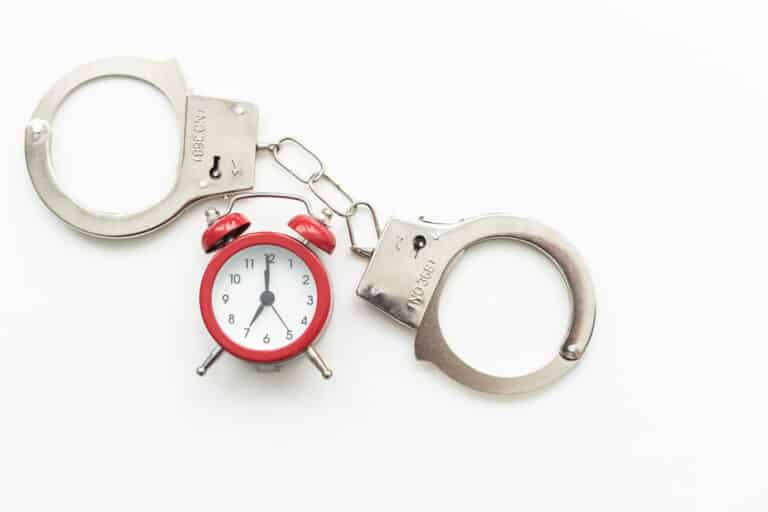The Crucial Role of Chain of Custody in Law Enforcement Transcription
In modern law enforcement, agencies rely on various forms of media, such as audio recordings, for investigations and evidence gathering. To efficiently process these media files, agencies often outsource their transcription projects to specialized speech-to-text companies. However, maintaining the integrity and admissibility of the transcriptions as evidence remains paramount. This is where the concept of chain of custody comes into play. In this blog, we will explore what chain of custody entails and the critical role it plays when law enforcement agencies (LEAs) send their media files to a transcription company for processing.
Understanding Chain of Custody
Chain of custody is the chronological documentation and control of physical evidence or digital media from its collection at a crime scene or point of origin to its presentation in court. Its primary purpose is to ensure evidence’s integrity, reliability, and admissibility by establishing a clear and unbroken custody trail.
The Importance of Chain of Custody in Transcription
When law enforcement agencies outsource their media files to a transcription service, the chain of custody remains essential for several reasons:
- Preservation of Integrity: Maintaining the integrity of evidence is crucial in any legal proceeding. By adhering to a documented chain of custody, agencies can demonstrate that the media files have not been tampered with or altered during transcription. This preserves the evidentiary value of the original recordings and ensures that the transcriptions accurately reflect the content of the files.
- Admissibility in Court: Properly documenting the chain of custody establishes the authenticity and reliability of the transcriptions. The court relies on the chain of custody to determine whether the evidence is admissible for consideration during trial. A strong and unbroken chain of custody enhances the prosecution’s ability to convince the court of the credibility and trustworthiness of the transcriptions.
- Mitigating Challenges and Disputes: The chain of custody plays a crucial role in addressing challenges and disputes related to the handling of evidence. By maintaining transparent and accountable processes, agencies can effectively respond to defense challenges regarding the accuracy, tampering, or mishandling of the transcriptions. A well-documented chain of custody provides a solid foundation for refuting such claims and upholding the reliability of the evidence.
- Protection of Defendant’s Rights: The chain of custody is not solely about preserving evidence for the prosecution. It also serves to protect the rights of the accused. By meticulously documenting each step involved in the transcription process, agencies uphold the defendant’s rights, preventing any claims of evidence mishandling or procedural misconduct. A robust chain of custody helps maintain fairness and credibility in the criminal justice system.
Ensuring Chain of Custody in Transcription Processes
When law enforcement agencies send media files to transcription companies, the LEA and the transcription provider must take several measures to maintain the chain of custody:
- Secure Transfer Protocols: LEAs must employ secure methods to transfer media files to transcription businesses. Depending on the capabilities of the transcription provider, they may offer encryption, secure file transfer protocols, or dedicated secure platforms to safeguard the files during transit, minimizing the risk of unauthorized access or tampering.
- Detailed Documentation: Thorough and accurate documentation is essential throughout the entire transcription process. LEAs must document the date, time, method of transfer, and individuals involved in sending the media files to the transcription company. Similarly, the transcription company needs to document the receipt of the files, ensuring a comprehensive record of custody is maintained.
- Secure Transcription Environment: Transcription services should implement strict security protocols to protect the integrity of the media files during the transcription process. This includes secure storage, access controls, confidentiality agreements for transcriptionists, and robust audit trails to monitor any changes made during the transcription process.
- Controlled Access and Data Security: Transcription companies must ensure that only authorized staff can access media files and transcriptions. They should establish stringent access controls, employ data encryption, and implement comprehensive data security protocols to prevent unauthorized access, data breaches, or leaks.
- Return and Storage: After transcription is complete, law enforcement agencies must securely receive the transcriptions back from the transcription company. The return process needs to be well-documented, including the date, time, and individuals involved. The LEA should maintain secure storage of the transcriptions until they submit them as evidence.
Athreon Trans|IT – A Guardian of Integrity
Maintaining a solid chain of custody is crucial when law enforcement agencies entrust their media files to transcription companies. If you’re seeking a reliable transcription service that prioritizes chain of custody requirements, consider Athreon’s law enforcement transcription service, Trans|IT. Athreon’s dedicated staff and advanced technology support the integrity and security of your evidence.
Athreon’s transcription staff undergoes regular training, including CJIS (Criminal Justice Information Services) and cybersecurity awareness training. This ensures that their team is well-versed in the requirements and best practices associated with chain of custody in law enforcement transcription.
Furthermore, Athreon’s advanced law enforcement transcription platform automatically tracks every action taken on law enforcement media files and transcripts throughout the transcription process. This includes date and time stamps for media file transfers, transcript views, prints, edits, and downloads. Trans|IT maintains a comprehensive audit trail, capturing the name of the user who performed each action for both the client’s and Athreon’s authorized users.
By choosing Athreon’s Trans|IT service, rated the best law enforcement transcription service by growing numbers of LEAs, you can trust that your media files and transcriptions are handled with the utmost care, adhering to chain of custody protocols. Athreon’s commitment to security, training, and detailed tracking ensures your transcriptions’ integrity, reliability, and admissibility as evidence in legal proceedings.
To experience the benefits of Athreon’s law enforcement transcription service and learn more about how they support chain of custody requirements, visit Athreon’s website and explore their Trans|IT service today.

